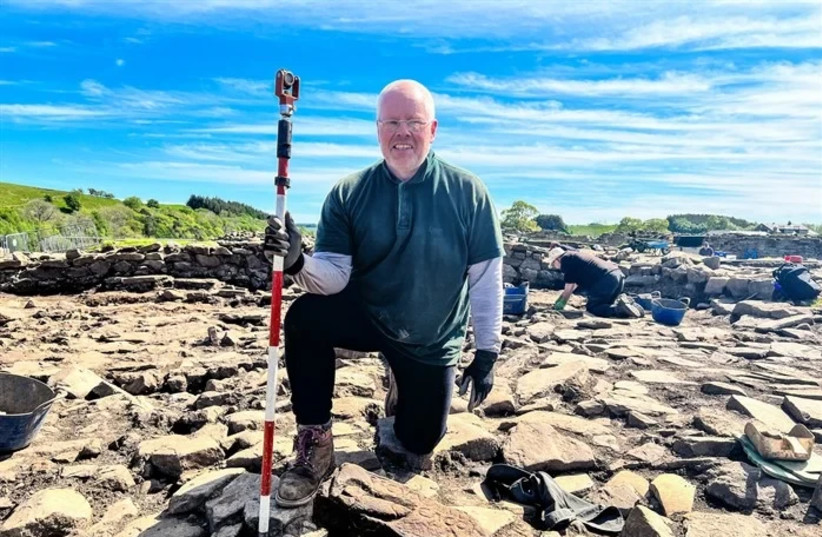Someone really, really did not like Secundinus. So much so that they engraved a very personal insult against him along with an explicit carving of a phallus onto a stone face that has lasted almost 2,000 years.
So all those who grab a can of spray paint and draw graphic drawings and insults on walls nowadays, take note: This is how it is done.
For all time, Secundinus will now be known as the “shitter,” leaving no doubt as to what at least one Roman soldier thought of him at the Roman fort and settlement of Vindolanda, located in today’s picturesque Northumberland British countryside, which is part of the Hadrian’s Wall World Heritage Site.
Hadrian’s Wall runs near the border between modern-day Scotland and England. It was built starting in 122 CE by Emperor Hadrian, primarily as a frontier to the Roman Empire to provide protection against hostile enemies and as a base for military units. The wall’s ruins are the most substantial Roman remains in Britain.
The fort and settlement has been a “treasure trove of everyday life during the Roman occupation of Britain and beyond,” said a press statement from the Vindolanda Charitable Trust, which was founded in 1970 and has been leading excavations at the site where archaeological digs have been taking place for almost 100 years. The recent discovery adds another layer to the human aspect of life there.

“What makes this part of the Hadrian’s Wall World Heritage Site so exceptional is that some of the nearly 2,000-year-old artifacts uncovered reveal human emotions and feelings,” said the statement.
One such example that especially stands out is the handwritten birthday invitation in which one woman very politely requests that her “dearest sister” join her to celebrate her birthday. Now this carved graffiti expresses a very different sentiment.
“What makes this part of the Hadrian’s Wall World Heritage Site so exceptional is that some of the nearly 2,000-year-old artifacts uncovered reveal human emotions and feelings.”
Vindolanda Charitable Trust
According to the press statement, it would have taken the author some time to very carefully carve each letter of his very emphatic graffiti against Secundinus, indicating that he was confident enough to announce his thoughts publicly carved in stone.
History and discovery
Dated to the third century CE by the archaeologists, the face of the stone measures 40 cm. wide by 15 cm. tall, (16” x 6”) and is engraved with the words SECVNDINVS CACOR. Specialists in Roman epigraphy – Drs. Alexander Meyer, Alex Mullen and Roger Tomlin – recognized it as a mangled version of Secundinus cacator: “Secundinus, the shitter,” with the image adding to the force of the written insult, noted the press statement.
In Roman times, the phallus was often seen as a positive symbol, as something of a good luck charm or symbol of fertility. However, together with these particular words, this one was hardly an expression of good will.
The carved stone was discovered on May 19 by excavation volunteer Dylan Herbert, a retired biochemist from South Wales who had been removing rubble as the stone kept getting in his way.
“I was glad when I was told I could take it out of the trench,” Herbert said, according to the press statement. “It looked from the back like all the others, a very ordinary stone. But when I turned it over, I was startled to see some clear letters. Only after we removed the mud did I realize the full extent of what I’d uncovered, and I was absolutely delighted.”
The phallus carving was the 13th such image found along this stretch of Hadrian’s Wall, noted the statement, far more than have been found in any other site along the wall.
“It is always special to get another name to add to the increasingly impressively long list of people who lived at Vindolanda, no matter the nature of the inscription and its venom,” Dr. Andrew Birley, CEO and director of excavations of the Vindolanda Trust, told The Jerusalem Post in an email. “Secundinus may or may not have been popular and may or may not have been worthy of this slur against his name. The inscription remains a window into the interpersonal conflicts between members of the military community. It is a very human connection to a people who might otherwise seem entirely alien to us today.”
